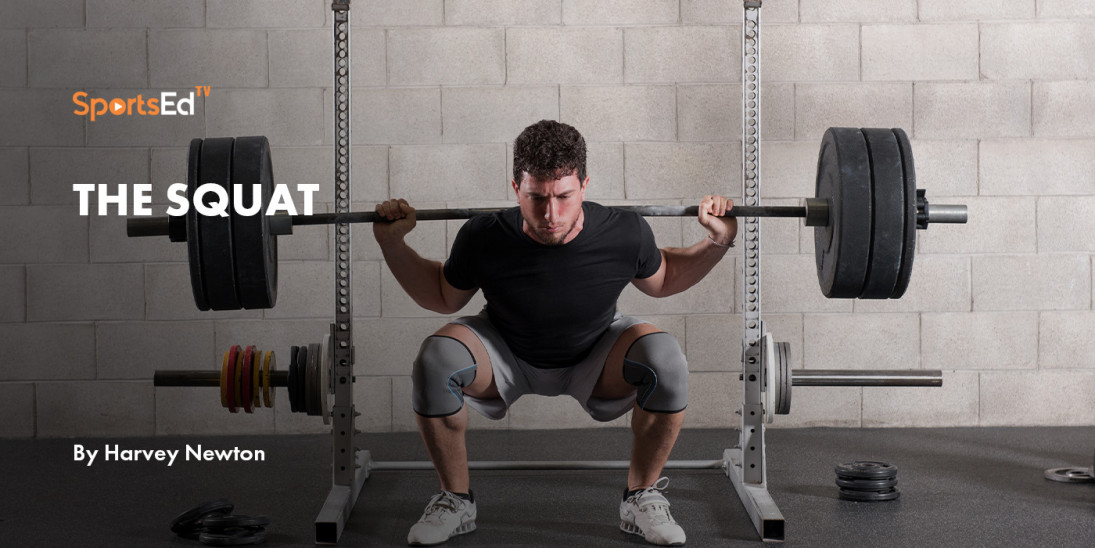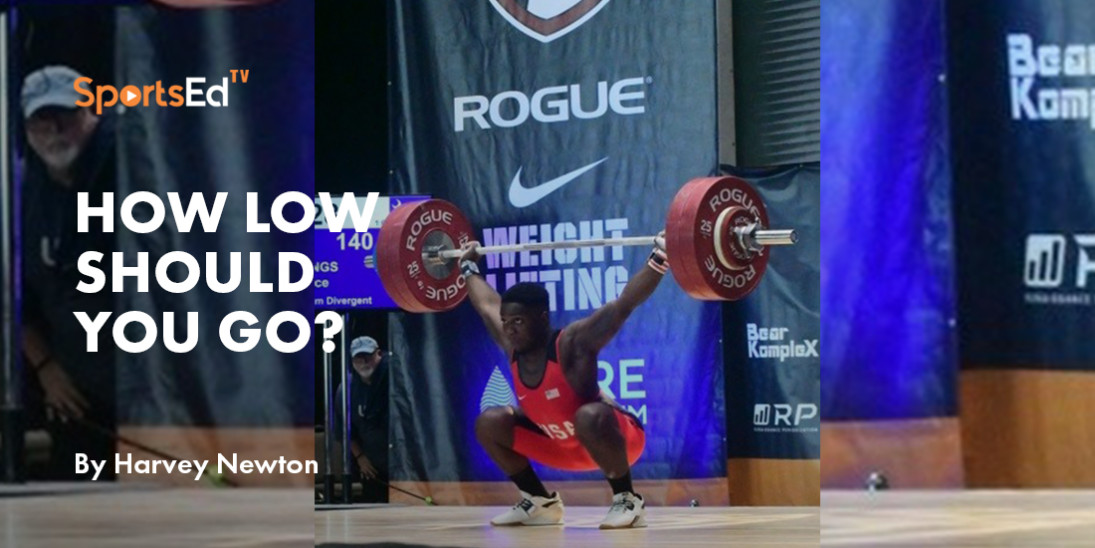Weightlifting
Welcome and thanks for visiting...

The Second Pull in the Snatch: Pay Attention!

Over the past several years it’s been interesting, and a bit comical, to watch a number of “experts” recommend violent contact (banging or punching the bar) off the hips, especially in the snatch lift.
Since the clean usually involves a closer hand spacing, doing so in this lift is unlikely, although some lifters flex the elbows in order to place the bar in the hip area.
Whether a lifter maintains “long” arms or flexes the elbows, bouncing the barbell off the hips or thighs redirects the bar’s path forward, resulting in a less efficient second pull in either lift. Such a technique may result in a successful lift, but this is not how the world’s best lifters pull.
Background
Pulling technique was modified, along with the sport’s technical rules, in the 1960s, allowing for improved performances. It was easily determined that a “double knee bend” (DKB) method of lifting produced higher end results. The DKB has been discussed in great detail elsewhere, so there’s no need to rehash those key points here. We will simply focus on how to properly pull in order to achieve improved efficiency.
When done properly, today’s pulling method uses the body’s strong lower body to assist in the second pull. Previously lifters were prohibited from touching the body with the barbell, so the second pull (from knees to full body extension) was performed through hip extension. Sometimes this resulted in a swinging motion; often lifters flexed the elbows (“pulled with the arms”) prematurely.
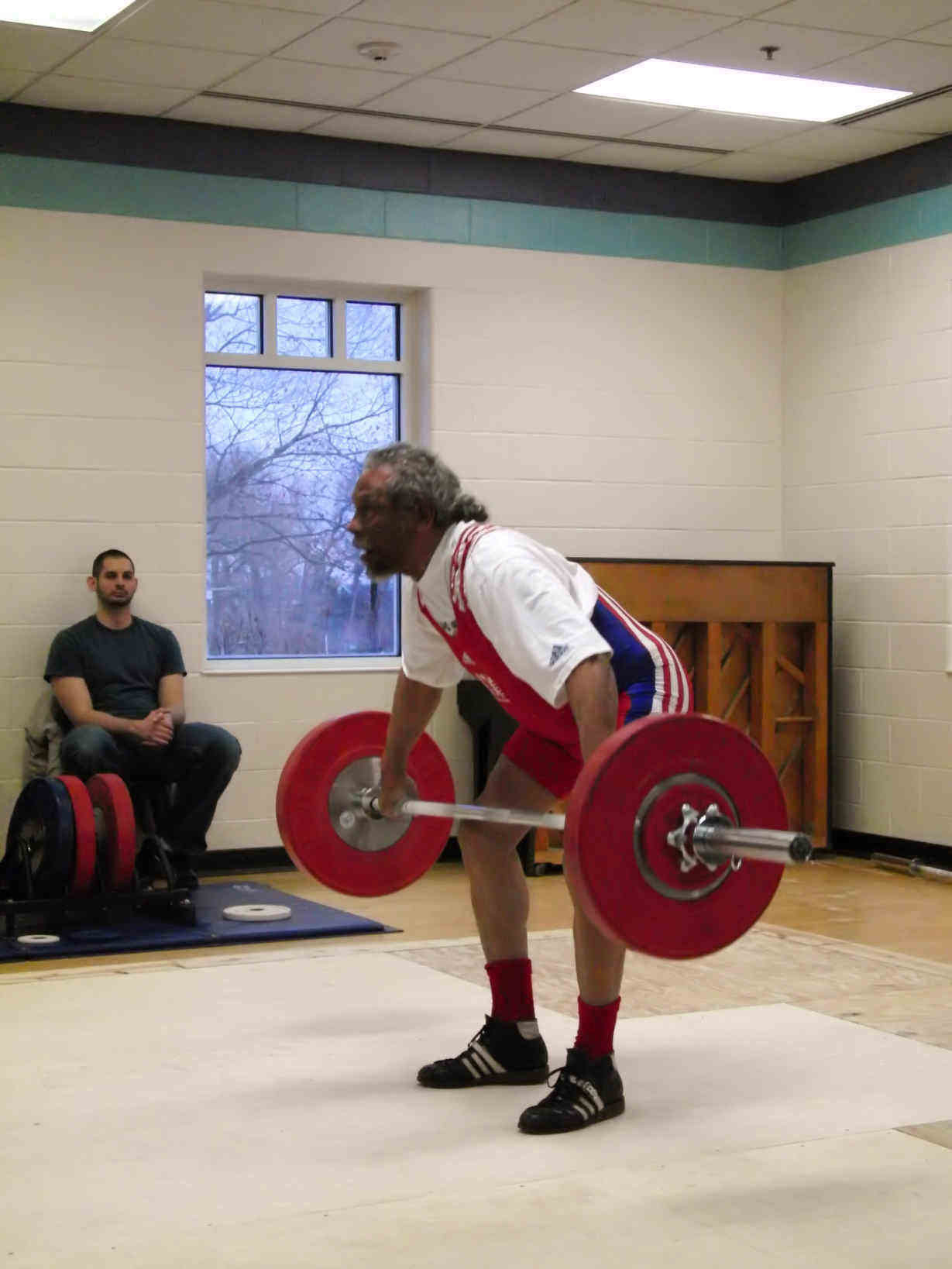


Stan Bailey, an international lifter who competed from the 1960s,
demonstrates the pulling style used prior to the double knee bend method
Bruce Klemens Photography
Hip extension, with or without bent arms, was the only way to lift. By the mid-1970s, USA’s National Coaching Coordinator Carl Miller wrote an insightful article, The Pull is Not an Extension. Miller drove home the notion that a successful modern snatch (or clean) performance is a summation of vertical forces. Unfortunately for many, his message has been lost over the years.
The DKB technique includes repositioning (flexing) the ankles, knees, and hips after the barbell passes the knees. The bar path during this brief portion of the lift should be kept vertical. Flexion of the ankles and knees causes the hips to move downward and forward, e.g., moving the body to the bar, not the opposite. It remains pretty easy to pull a light barbell toward the hips, as often seen with novice lifters. But doing so with elite lifting intensities results in undesired horizontal movement of the weights.
This repositioning of the body is referred to as the transition stage of pulling. By moving the hips under the bar, the lifter now is in what is called the power position. Here the bar is likely to be in contact with the body. The strong lower body now contributes to an explosive second pull effort.
As some coaches have accurately pointed out, properly lifting from the power position could easily be called a push instead of a pull. The push is accomplished by forcefully extending the lower body to create the peak power measure seen in what we still refer to as the second pull. This allows for much greater weights to be lifted than the older, hip extension method.
Bang the Bar: Its Origins
After the 1968 Olympics in Mexico City the rules evolved so as to allow the barbell to “brush” the thighs during the transition stage, but “violent contact” (another subjective call by the officials) was against the rules. Unfortunately, far too many lifters failed to heed the science behind the DKB, and instead simply bounced the bar off the thighs or hips.
Check pictures of elite lifters in the late 1960s and 1970s and note the patches that were applied to training track pants damaged by this new (incorrect) notion of bouncing the bar off the lower body.
Such an incorrect interpretation of the DKB technique led many lifters to swing the bar outward in the second pull, from contact to overhead (snatch) or rack (clean). This results in another horizontal displacement of the barbell.
While “perfect” technique includes some forward motion of the bar while pulling under, a big bounce misdirects the barbell from its vertical path to a horizontal one. This is easily seen by checking the distance between the lifter’s torso and the barbell during the pull-under phase.
Although a good deal of scientific evidence was available at the time the DKB was adopted by nearly all lifters, far too many “experts” described the pull as simply banging the bar off the thighs (or hips as the case may be in the snatch due to a wide grip). This failure to understand the new technique, along with the elimination of the press lift in 1972, set back the performances of many countries.
Later, as the availability of rational coaching education materials became more common it seemed everyone might be “on the same page.” However, this has not always been the case, as is seen in The Journal of Strength and Conditioning Research (Vol 26, Number 5, 2012). Here we find a study, “Comparison of the Snatch Technique for Female Weightlifters in the 2008 Asian Championships” in which Japanese sport scientists compared their lifters’ snatch results with those from other Asian countries.
While there is much to be learned from reading this study, of particular significance is the following quote from the Discussions section of the paper:
In the Japanese coaching method for the snatch, the lifters are directed to pull the barbell backward to hit the barbell to the lifter’s pubic bone during the second pull.”
Here we see two concerns: 1) pulling the bar rearward during the transition (extending the hip), and 2) hitting the barbell off the pubic bone. One need look no farther than Isaac Newton’s Laws of Motion to note some conflicts at play relative to efficient pulling technique.
The Basics: A Visual Lesson
With the advent of the internet and the possibility of a greater impact on a larger audience, questionable advice has become commonplace. The sport of weightlifting in the United States and elsewhere has been heavily impacted by the popularity of CrossFit and its embracing weightlifting’s classic lifts. Over the past several years we have seen a proliferation of questionable advice, including banging the bar off the hips, steering potential lifters in the wrong direction.
With this old adage, a picture is worth a thousand words, let’s cut to the chase. The 2020 Tokyo Olympics test competition featured a Japanese woman lifter who displays outstanding snatch technique. Close examination of her technique indicates absolutely no banging of the bar off the hips, but a powerful and well-directed second pull (think push).
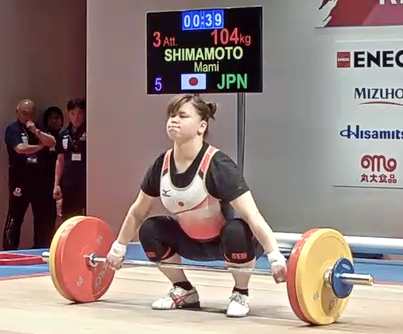
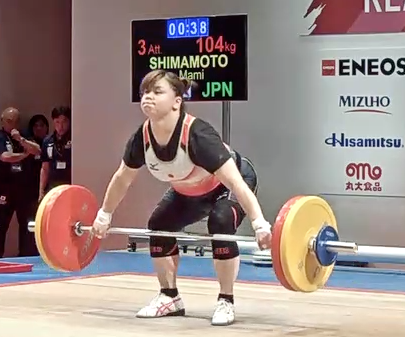
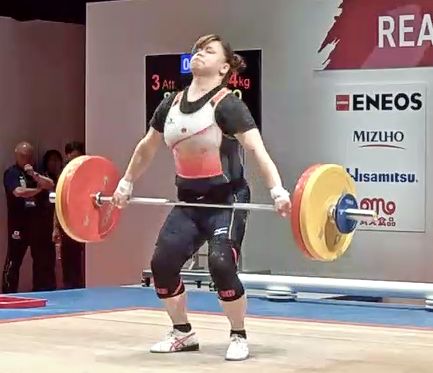
Start > End of 1st Pull > Transition

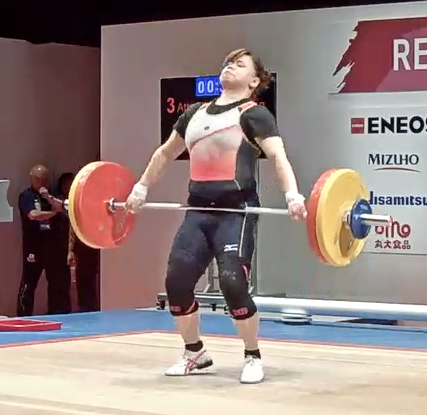
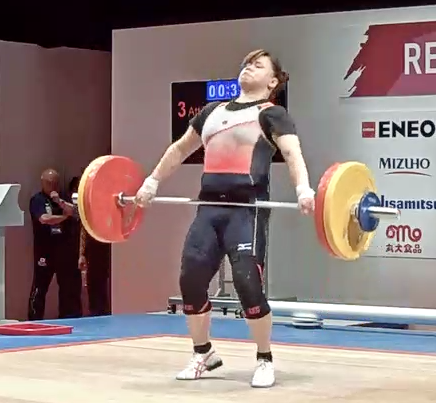
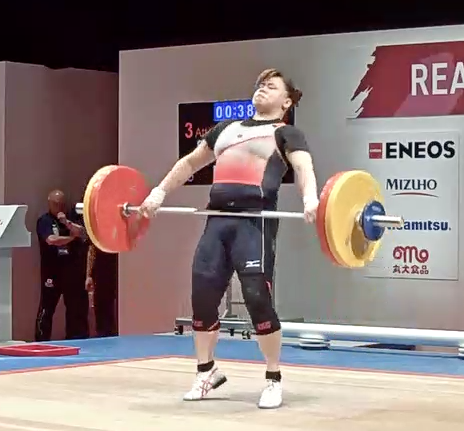
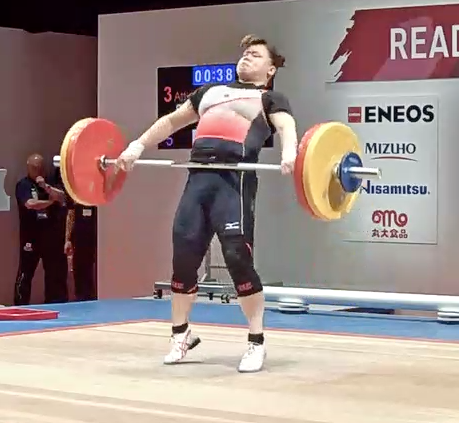
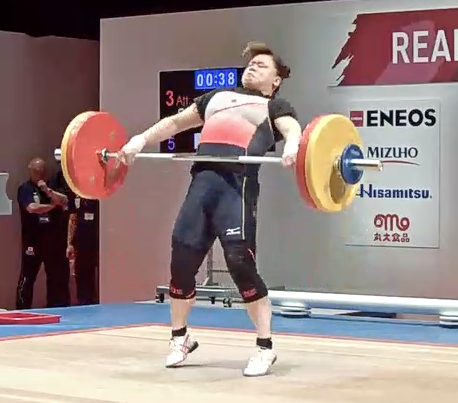
2nd Pull
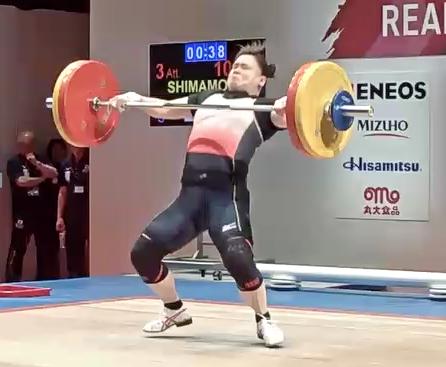
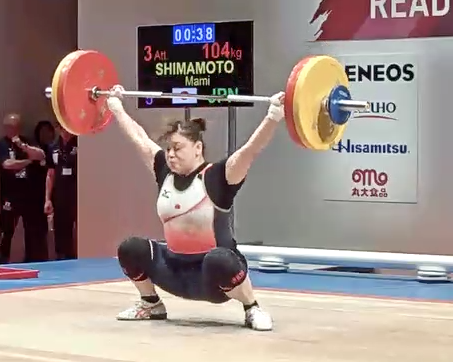
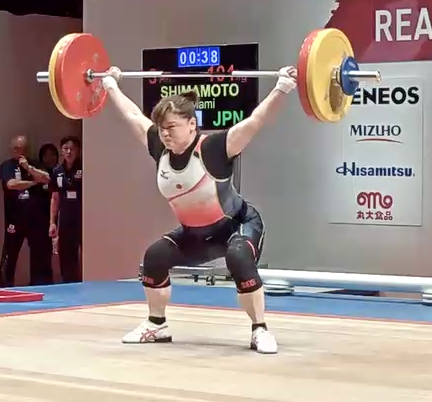
Pull-under > Catch > Recovery
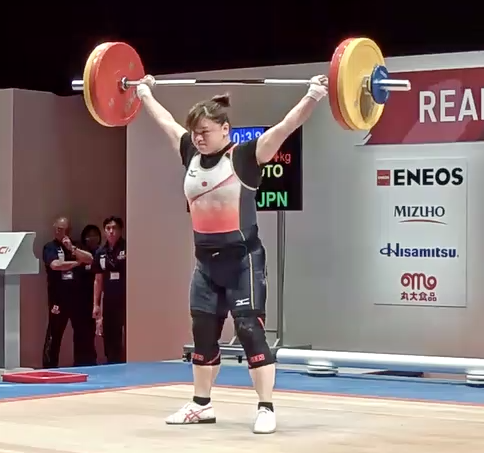
Success
Notice there is no banging of the bar off the hips, only a strong, vertical thrust with the bar in the same point of contact while pushing with the lower body. Here we do not have an accurate picture of barbell trajectory, but check against background reference points (scoreboard, coach, etc.) to note there is no strong deviation from a straight, close-to-the-body second pull.
The lifter leans rearward at the top of the second pull, and the barbell is a moderate distance from the torso as she pulls under. But this is not evidence of bouncing or swinging the barbell forward.
This is a great visual example of what proper snatch technique looks like. This is the same technique that we use in the SportsEdTV weightlifting library to teach proper pulling technique. When a lifter can successfully perform a snatch high pull, remaining balanced momentarily in the triple extended position, a coach can be assured the lifter is providing power to the barbell in a vertical path.
Without blocks, the lift is performed from the hang position:
After several sessions mastering the snatch high pull it’s time to move into learning the power snatch from the same position:
Final Thoughts
Learn to snatch properly, as explained here, and your competitors will not be happy. Equally important, learn to snatch properly and your pubic bone will thank you.


